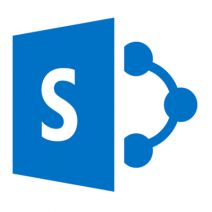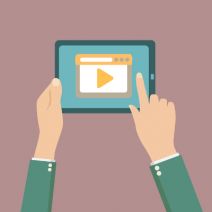 Email is such a staple of the modern office that it might seem like even the mention of a world without it is ludicrous. Others, however, feel like their inbox is keeping them from pushing toward bigger and better things. Email might hold a special spot in our hearts, but realistically, does it stand a chance in the future?
Email is such a staple of the modern office that it might seem like even the mention of a world without it is ludicrous. Others, however, feel like their inbox is keeping them from pushing toward bigger and better things. Email might hold a special spot in our hearts, but realistically, does it stand a chance in the future?
Macro Systems Blog
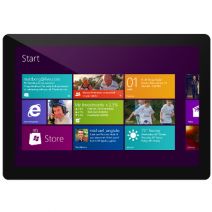 Smartphones and tablets are the new norm. Most professionals have begun to utilize mobile devices to accomplish tasks when they are away from their work PC. Not to say that these devices offer all that much in the way of productivity. Sure, there are plenty of software titles either ported over from the PC or developed directly for the mobile environment, but sometimes these titles don’t offer the functionality, or they take up too many of the device’s resources to be of much use. With these variables to consider, manufacturers are searching for the best way to deliver devices with enhanced productivity capabilities, right out of the box. One of these manufacturers is Microsoft.
Smartphones and tablets are the new norm. Most professionals have begun to utilize mobile devices to accomplish tasks when they are away from their work PC. Not to say that these devices offer all that much in the way of productivity. Sure, there are plenty of software titles either ported over from the PC or developed directly for the mobile environment, but sometimes these titles don’t offer the functionality, or they take up too many of the device’s resources to be of much use. With these variables to consider, manufacturers are searching for the best way to deliver devices with enhanced productivity capabilities, right out of the box. One of these manufacturers is Microsoft.
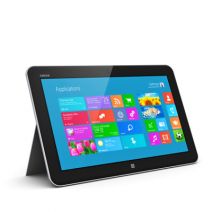 In part one, we provided an overview of Microsoft’s newest foray into mobile computing and how they’ve finally arrived after years of trying to implement a mobile strategy. In this part, we will provide you with specific technology that your business can potentially employ to utilize Windows-based tablets to improve your organization’s mobility.
In part one, we provided an overview of Microsoft’s newest foray into mobile computing and how they’ve finally arrived after years of trying to implement a mobile strategy. In this part, we will provide you with specific technology that your business can potentially employ to utilize Windows-based tablets to improve your organization’s mobility.
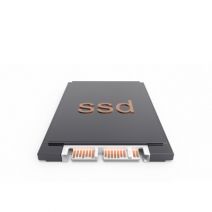 If you’re in the market for a new computer, then you’re going to have to make a decision: Go with a traditional hard drive (HDD), or a solid state drive (SSD). While a computer equipped with an HDD will cost you less money, an SSD promises to faster speeds and a longer lifespan. This begs the question, is SSD worth the extra money?
If you’re in the market for a new computer, then you’re going to have to make a decision: Go with a traditional hard drive (HDD), or a solid state drive (SSD). While a computer equipped with an HDD will cost you less money, an SSD promises to faster speeds and a longer lifespan. This begs the question, is SSD worth the extra money?
 When was the last time you let your phone’s battery die on you? Due to the takeover of mobile technology in the workplace, smartphones have basically become inseparable from their owners, particularly the ever-busy business owner. Despite the imperative role that smartphones have in the workplace, you should know that there are several battery myths that might be holding you back from achieving maximum efficiency with your device.
When was the last time you let your phone’s battery die on you? Due to the takeover of mobile technology in the workplace, smartphones have basically become inseparable from their owners, particularly the ever-busy business owner. Despite the imperative role that smartphones have in the workplace, you should know that there are several battery myths that might be holding you back from achieving maximum efficiency with your device.
 If you use Google Chrome as your browser of choice, you know that Chrome’s extensions provide a certain level of versatility. Basically, they’re add-ons to your browser, which can perform a number of functions. They’re mostly used for enriching your browsing experience or adding new features to your browser that might not be available on other platforms. Here are four useful browser extensions to help you get the most out of Chrome.
If you use Google Chrome as your browser of choice, you know that Chrome’s extensions provide a certain level of versatility. Basically, they’re add-ons to your browser, which can perform a number of functions. They’re mostly used for enriching your browsing experience or adding new features to your browser that might not be available on other platforms. Here are four useful browser extensions to help you get the most out of Chrome.
 Entertainment has grown so synonymous with smartphones and technology that it’s almost impossible to think about these innovations without considering their entertainment value. Virtual reality augmentation, while slightly different, is an emerging technology that brings elements of virtual space to the lives of everyday users. So, how does virtual reality work, and can it be used for more than just entertainment purposes?
Entertainment has grown so synonymous with smartphones and technology that it’s almost impossible to think about these innovations without considering their entertainment value. Virtual reality augmentation, while slightly different, is an emerging technology that brings elements of virtual space to the lives of everyday users. So, how does virtual reality work, and can it be used for more than just entertainment purposes?
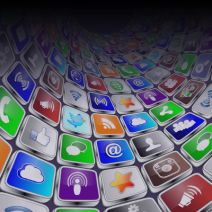 The modern office only resembles the office of the past. Sure there are still desks and chairs and cork boards hanging on the walls. There are still printers, copiers, and maybe even a fax machine (although many times nowadays all of those tasks are handled by the same machine). The differences, though often understated, are prevalent; with advancements in technology being the most noteworthy change. The most evident of which, is the widespread use of employee-owned mobile devices.
The modern office only resembles the office of the past. Sure there are still desks and chairs and cork boards hanging on the walls. There are still printers, copiers, and maybe even a fax machine (although many times nowadays all of those tasks are handled by the same machine). The differences, though often understated, are prevalent; with advancements in technology being the most noteworthy change. The most evident of which, is the widespread use of employee-owned mobile devices.
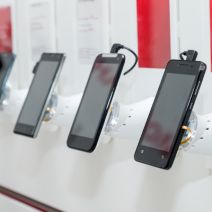 There’s no denying that smartphones are the predominant consumer technology in the world at the moment. Over a billion smartphones were sold each of the past two years, with growth coming in at a fairly impressive 23 percent from 2013 to 2014. Growth is projected to decrease slightly in future years (around 12 percent in 2015), but it’s obvious by now, smartphone usage will be the principal manner people will access the Internet going forward.
There’s no denying that smartphones are the predominant consumer technology in the world at the moment. Over a billion smartphones were sold each of the past two years, with growth coming in at a fairly impressive 23 percent from 2013 to 2014. Growth is projected to decrease slightly in future years (around 12 percent in 2015), but it’s obvious by now, smartphone usage will be the principal manner people will access the Internet going forward.
 Remote workers are changing the way that both employees and their employers are viewing their workspace. It’s been proven that businesses can mitigate their overhead costs and increase their employee retention rate by allowing their team to work from home, but without the proper technology, they have no chance of being as productive as they can be if they were in the office.
Remote workers are changing the way that both employees and their employers are viewing their workspace. It’s been proven that businesses can mitigate their overhead costs and increase their employee retention rate by allowing their team to work from home, but without the proper technology, they have no chance of being as productive as they can be if they were in the office.
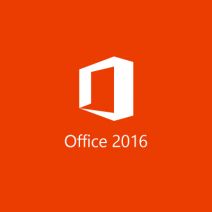 Just months after releasing their newest operating system, Windows 10, Microsoft is now updating the world’s most popular productivity software. Office 2016 makes several improvements over the Office 2013 versions of Word, Excel, PowerPoint, and the other applications that businesses from all over the world rely on to stay productive. The software, which focuses on making productivity and cooperation possible, has gotten a substantial upgrade in collaborative features.
Just months after releasing their newest operating system, Windows 10, Microsoft is now updating the world’s most popular productivity software. Office 2016 makes several improvements over the Office 2013 versions of Word, Excel, PowerPoint, and the other applications that businesses from all over the world rely on to stay productive. The software, which focuses on making productivity and cooperation possible, has gotten a substantial upgrade in collaborative features.
 If you’ve ever tried to work while out of the office on your smartphone or tablet, you’ll have realized that mobile devices aren’t the optimal productivity machine to get the most quality work done. However, if you take advantage of the proper gadgets, you can take back your productivity and continue to get work done, even under the worst circumstances.
If you’ve ever tried to work while out of the office on your smartphone or tablet, you’ll have realized that mobile devices aren’t the optimal productivity machine to get the most quality work done. However, if you take advantage of the proper gadgets, you can take back your productivity and continue to get work done, even under the worst circumstances.
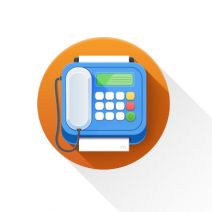 Does your office still use a fax machine? You know that it’s an outdated piece of equipment, but this fact might not deter its continued use if you don’t care about the latest technology (we admit that not everyone does). Perhaps by taking a look at all the money wasted by using a fax machine, we can convince you otherwise.
Does your office still use a fax machine? You know that it’s an outdated piece of equipment, but this fact might not deter its continued use if you don’t care about the latest technology (we admit that not everyone does). Perhaps by taking a look at all the money wasted by using a fax machine, we can convince you otherwise.
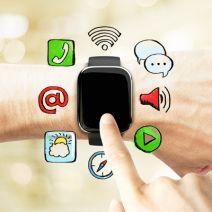 Wearable technology isn’t a new concept, but lately it’s been exploding in popularity. People love the fact that they can use their watch to perform various features that a smartphone can accomplish, and they enjoy how their workouts can be monitored by various health sensory-type devices. However, is this obsession with wearable technology going to amount to anything, or will it be a notorious flop?
Wearable technology isn’t a new concept, but lately it’s been exploding in popularity. People love the fact that they can use their watch to perform various features that a smartphone can accomplish, and they enjoy how their workouts can be monitored by various health sensory-type devices. However, is this obsession with wearable technology going to amount to anything, or will it be a notorious flop?
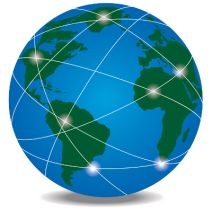 Have you ever wondered how the Internet is capable of connecting countries on the other side of the world? You may already be aware of this, but the Internet’s cables run deep underneath the ocean’s surface, all around the world. In fact, you might wonder how we could even keep these cables safe when they’re submerged underneath such an immense amount of water.
Have you ever wondered how the Internet is capable of connecting countries on the other side of the world? You may already be aware of this, but the Internet’s cables run deep underneath the ocean’s surface, all around the world. In fact, you might wonder how we could even keep these cables safe when they’re submerged underneath such an immense amount of water.
 Take a good, hard look at your desk telephone. How often do you use it for day-to-day operations? With the advent of technologies like Voice over Internet Protocol (VoIP) and the smartphone, it seems silly to be reliant on the telephone that’s tethered to your desk. However, some people still aren’t ready to leave the office telephone behind in favor of these new technologies. But… why?
Take a good, hard look at your desk telephone. How often do you use it for day-to-day operations? With the advent of technologies like Voice over Internet Protocol (VoIP) and the smartphone, it seems silly to be reliant on the telephone that’s tethered to your desk. However, some people still aren’t ready to leave the office telephone behind in favor of these new technologies. But… why?



